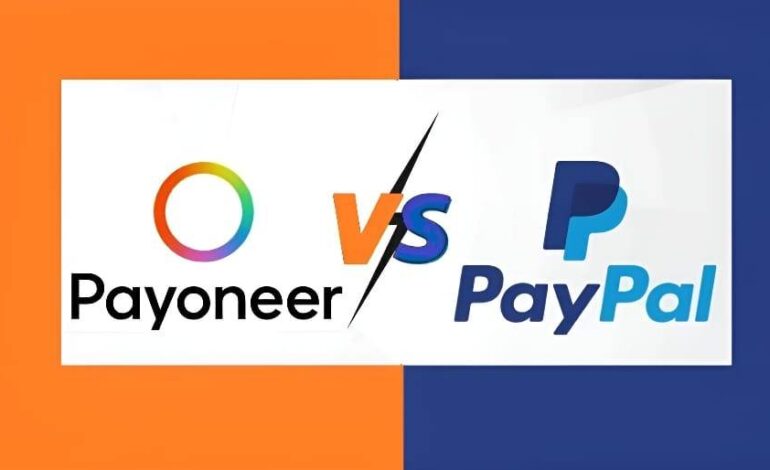PayPal vs. Payoneer: A Comprehensive Comparison

Online payment platforms have become essential tools for freelancers, businesses, and individuals alike. Among the leading platforms in the market, PayPal and Payoneer have emerged as popular choices. Both offer a range of services, but each comes with its unique features, benefits, and limitations. In this article, we will conduct a detailed comparison between PayPal and Payoneer to help you make an informed decision on which platform best suits your needs.
Accessibility:
PayPal: One of the most widely recognized online payment systems, PayPal operates in more than 200 countries and supports over 25 currencies. Users can link their bank accounts, and credit/debit cards, and even receive payments directly to their PayPal accounts.
Payoneer: While Payoneer also operates globally, it provides services in around 200 countries and supports more than 150 currencies. Like PayPal, users can connect their bank accounts, and cards, and receive payments into their Payoneer accounts.
Transaction Fees:
PayPal: PayPal charges a transaction fee for every payment received, usually around 2.9% plus a fixed fee, varying depending on the currency. Cross-border transactions and currency conversions often come with additional charges.
Payoneer: The transaction fees with Payoneer differ based on the type of transaction, the location, and the currency. The fees are typically lower for Payoneer when receiving payments from international clients or making cross-border transactions.
Withdrawal Options:
PayPal: Users can withdraw funds from their PayPal account to their linked bank account, which usually takes a few business days. Alternatively, PayPal offers a debit card for quicker access to funds.
Payoneer: Payoneer provides several withdrawal options, including bank transfers, local currency withdrawals at ATMs, and the Payoneer prepaid Mastercard®. This card enables instant access to funds without waiting for bank transfers.
Currency Conversion:
PayPal: Currency conversion rates can be a drawback with PayPal, as they often include a margin above the market rate. This can result in higher costs for users dealing with multiple currencies.
Payoneer: Payoneer offers competitive currency conversion rates, making it a more cost-effective option for users dealing with various currencies.
Integration with Marketplaces:
PayPal: Known for its widespread integration, PayPal is widely accepted by numerous online marketplaces, making it convenient for e-commerce businesses and freelancers.
Payoneer: Payoneer also offers integrations with various e-commerce platforms and marketplaces, though its acceptance may not be as extensive as PayPal’s.
Customer Support:
PayPal: PayPal’s customer support is available through various channels, including phone, email, and chat. However, users have reported mixed experiences with response times and issue resolution.
Payoneer: Payoneer’s customer support is known for being responsive and helpful, catering to user queries efficiently.
Conclusion:
Both PayPal and Payoneer are reputable online payment platforms, and choosing between the two depends on your specific requirements and preferences. If you need a well-established platform with widespread acceptance and faster access to funds, PayPal might be the way to go. On the other hand, if competitive currency conversion rates and versatile withdrawal options are crucial, Payoneer could be the better choice.
In any case, it’s essential to assess your unique needs and transaction patterns before making a decision. Ultimately, both platforms offer reliable and secure solutions for handling online transactions, making them valuable assets in today’s digital economy.



